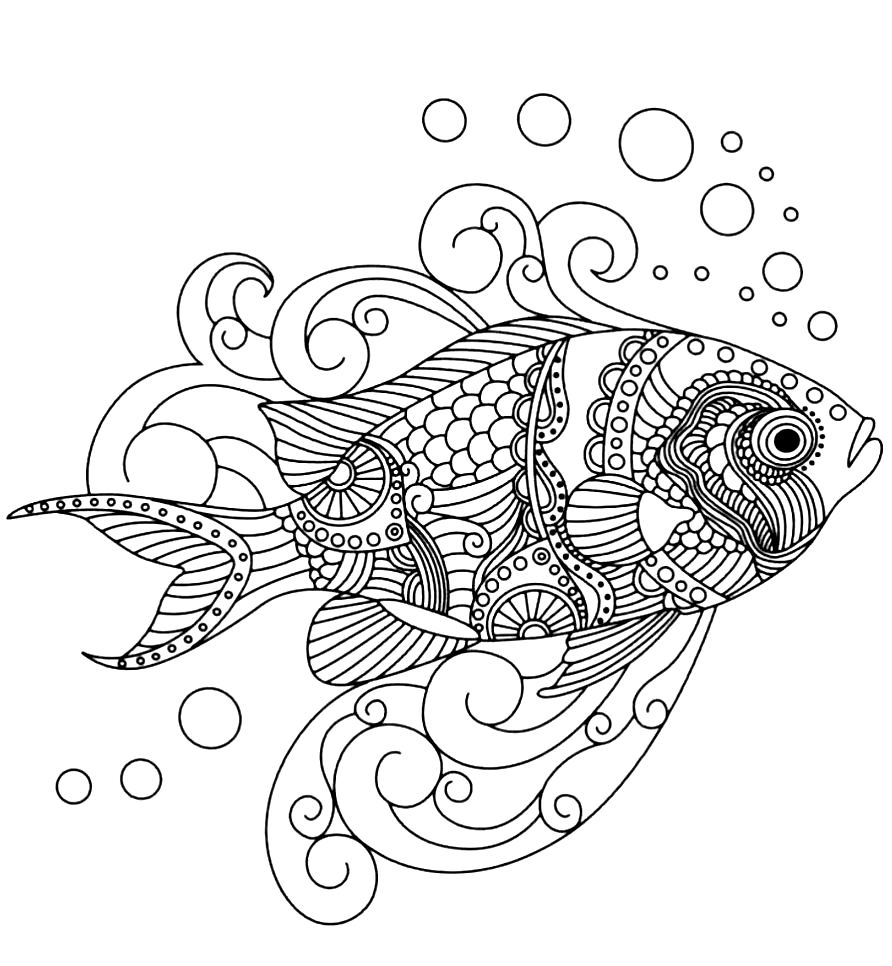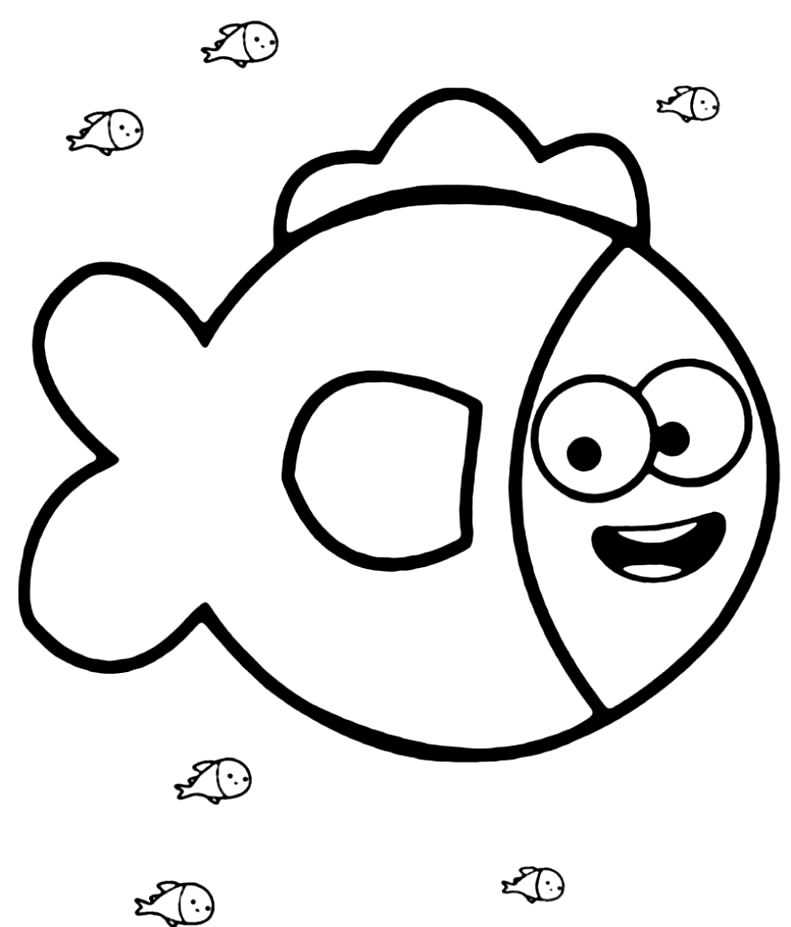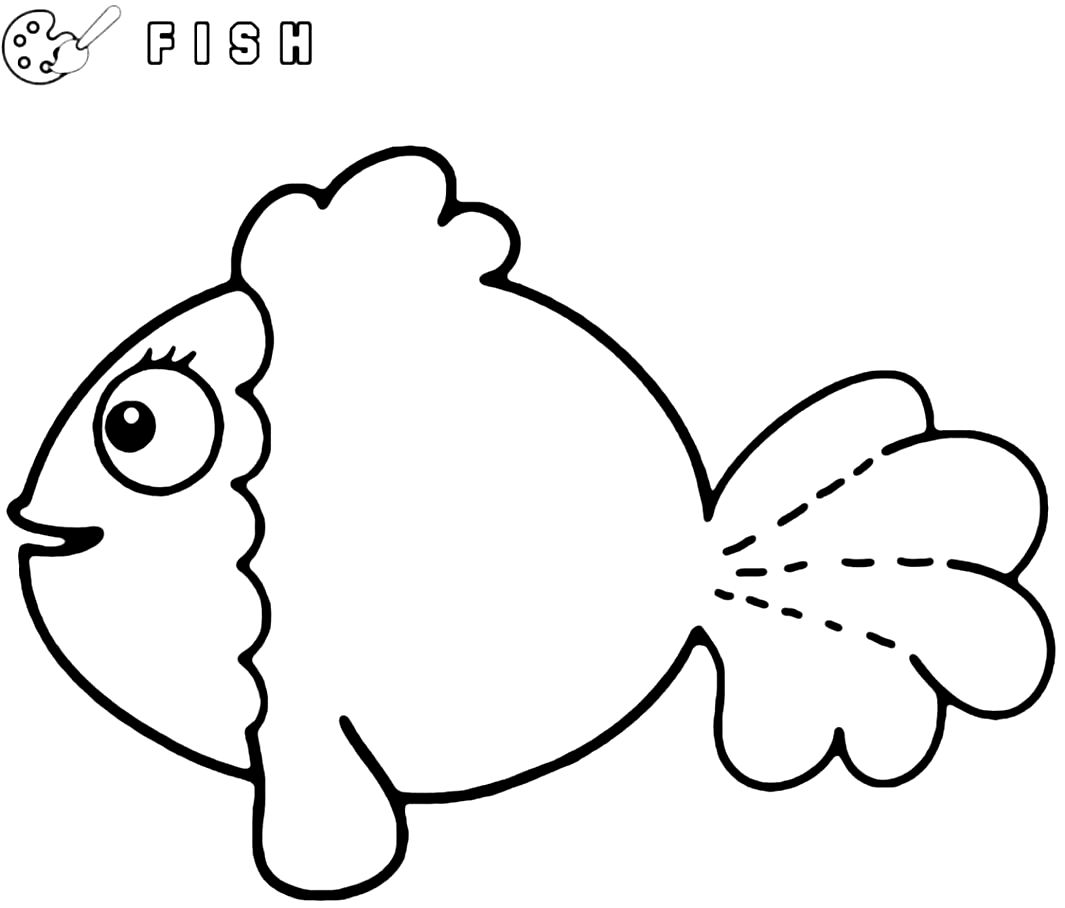Fishes
We have prepared coloring pages for fish living under water. Fish coloring page will tell you better about the creatures living in the seas. On the other hand, we also included interesting information about fish. Since these creatures live underwater, the main color will be blue and shades of blue. Now let's prepare our pastel colors. The colors you should choose for the most beautiful painting; colors such as blue, green, yellow, turquoise, brown will be required.
Printable Fishes coloring pages (Free)
Hope you enjoyed our fun fish coloring pages. We have also prepared interesting information about fish for you. Fish that live only in water and are considered the most important part of underwater life; They are described as cold-blooded animals that breathe through their gills and generally reproduce with eggs. Fishes with the highest number of species among vertebrates; According to scientific studies, it is a living species with 40 thousand different species. These fish breeds, whose number reaches 40 thousand; They are classified under two main headings as cartilaginous fish and bony fish.
Fish Characteristics
Fish that can live in all waters, including sea, ocean, fresh water, streams and lakes; They are cold-blooded creatures that breathe through gills and whose surfaces are covered with scales. Fish, which can move quickly in water by means of their fins, can have different diets such as carnivores, herbivores and omnivores.
These creatures, which generally prefer to live in flocks and have a two-eyed heart, are divided into two basic classes: bony fish and cartilaginous fish.
Bony Fish
The skeletons of these creatures, which have variable body temperatures, are of a bony structure. The circulatory systems of bony fish, whose bodies are covered with a kind of mucus to prevent water from entering the body, are a closed system. Fish such as anchovy, trout, carp and sea bass, which are also considered as protein sources and are frequently consumed by humans, are members of this class.
Cartilaginous Fish
The skeletons of these fish, which have a more developed brain than bony fish, are cartilaginous. The hearts of cartilaginous fish, which reproduce by internal fertilization and whose body temperatures are highly variable, also consist of two chambers. Fish such as shark, crayfish and stingray are members of this class.
Fish Species
Fish with a history of 500 million years; Today, it is evaluated by people in three different ways: for sporting purposes, as a protein source and to be kept in aquariums. In addition, fish species with very wide distributions; They live in hot, cold, dark, bitter, sweet waters that have many different features that the human hand has not yet touched.
Aquarium Fish Species
Aquariums, which can be in a wide range from a small glass jar to a large transparent water tank, are used for keeping and feeding or displaying many sea creatures, especially fish, for hobby purposes. Today, owning an aquarium attracts attention as a common activity shared by approximately 60 million people. So, what are the aquarium fish species? We have listed the most preferred 10 different types of aquarium fish, whose numbers are expressed in hundreds:
- Japanese fish
- Scavenger Fish
- Beta Fish
- Angelfish
- Swordtail Fish
- Zebrafish
- Molly Fish
- Astronaut Fish
- Guppy Fish
- Neon Tetra Fish
- Types of Goldfish
Goldfish, perhaps the first of the most preferred fish for aquariums; It is one of the easiest fish to feed because it is a fish of Asian origin and has a docile character. The commonly preferred species of goldfish, which have approximately more than 300 species, are as follows:
- Common Goldfish
- Telescope Goldfish
- Butterfly Tail Goldfish
- Bag-Eyed Goldfish
- Vakin Goldfish
- Pearl Goldfish
- Veiled Tail Goldfish
What are the Fish Types and Characteristics?
Sword; Known for its sword-like upper jaw and dark blue-black back colour, this fish's relative Marlin is not found in our waters. Found mostly around Bermuda in the Atlantic Ocean, this fish is distinguished from the sword when cooked, with its pinkish flesh color, dorsal fin extending from head to tail, and a flat upper jaw instead of a round one.
Tabby; This fish, which is very similar to red mullet and is a close relative, is caught in all our seas. Those caught in the Black Sea and Marmara are between 6 and 10 cm. In the Aegean and Mediterranean, their size catches the red kidney beans. It is distinguished from red kidney beans by the length of the under-chin whiskers, the blunt head, and the yellow-black spots on the first dorsal fin.
Gray mullet; It is a scaly and non-migratory fish that is delicious outside the summer months. It grows in all our seas.
Bluefish; It is one of the top 5 fish with the strongest jaws among fish varieties. As a result of evolution, their hunting skills have been highly developed. While hunting, it can use both its jaw and teeth at the same time.
Anchovy; It is easily distinguished from its close relative, Sardine, with its mouth that slides behind its eyes and its curved nose. The silverfish is also a relative of the anchovy. They average 12 cm in length and grow up to a maximum of 18-20 cm and travel in very large flocks. Black Sea Anchovy is divided into Azov and Black Sea.
Sea bream; Sea bream generally likes warm seas and mostly lives in the Mediterranean. Subspecies are divided into three types depending on their size and physical characteristics. The thin and thick varieties of these fish, known as lidaki, also live in the Aegean, Black Sea and Mediterranean Seas.
Whiting; Haddock, also known as chicken fish, is found in all our seas, but it is mostly found in the Black Sea. Except for summer, it is always egg-laying. Egg pan, tomato sauté would be nice.
Kolyos; Having an important place in European cuisine, scallops are cooked with an increasing popularity in our country. Although the meat is delicious, it is difficult to clean and professional help may be required. Although its appearance and physical characteristics are similar to mackerel, it is much rarer and more expensive than these fish.
















